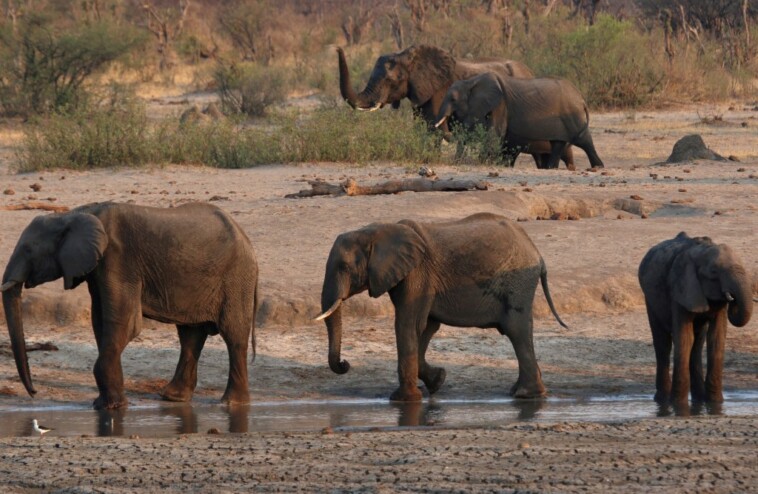HARARE, Zimbabwe – A climate crisis in southern Africa has triggered the government of Zimbabwe to allow for the mass slaughter of elephants, according to a locally based conservation group.
The Centre for Natural Resource Governance (CNRG) said the Zimbabwe Parks and Wildlife Management Authority has authorized for the killing of 200 elephants in order to reduce the burden on the drought-stricken landscape and feed starving citizens.
According to the United Nations, the crisis was brought on by a strong El Niño, which produced warm temperatures and a lack of precipitation.
Relief groups said the driest February in over 100 years led to pastures drying up and the deaths of over 9,000 cattle in the region of Botswana, Namibia, Zambia and Zimbabwe.
“Compared to the El-Niño event of 2015/16, the 2023/2024 phenomenon affected more countries and its impacts in southern Africa were more intense. El Niño as a climate event was stronger in 2015/16 than in 2023/24. However, the impacts of El Niño 2023/24 are more significant as they were exacerbated by various factors, including climate change, deforestation, and economic constraints,” the United Nations Office for the Coordination of Humanitarian Affairs said.
Over the last 180 days, satellite estimates show large swaths of the continent have seen less than 25% of their typical rainfall, leading to poor vegetation and increased risks of famine.
The 2023–24 El Niño formed in June 2023 and lasted nearly a year before dissipating, resulting in a neutral status of the El Niño–Southern Oscillation in the Pacific.
The global event was estimated by the World Meteorological Organization to be the fifth-strongest El Niño in history and led to widespread droughts, flooding and record sea surface temperatures.
Six countries in southern Africa declared a state of emergency due to drought conditions which was thought to be more than 50% more impactful than the previous El Niño cycle.
“Although we acknowledge the devastating effects of one of the worst droughts in decades, we do not believe the meat of 200 elephants will fill that food deficit. According to the Zimbabwe Livelihoods Assessment Committee (ZIMLAC) about 6 million people in rural areas and 1.7 million in urban areas – more than half the country’s population – will need food assistance between now and the next harvest. A robust, well-thought-out and sustainable strategy to feed the hungry population is required,” the CNRG said in a statement.
The Zimbabwe Parks and Wildlife Management Authority previously estimated the country has more than 82,000 elephants, which is more than twice the target population set during the 1980s.
The government did not publicly state how many residents were expected to be fed from the elephant culling.
“We fear this is a major policy reversal that defeats excellent conservation work championed by the government and private players over the past four decades. The move has the potential to open floodgates for poaching, especially bearing in mind that the poisoning of elephants and smuggling of ivory has been a continuous challenge over the years. CNRG is aware of a thriving illicit ivory market in Asia operated by a web of transnational organized crime actors,” preservationists stated.
In nearby Namibia, the government approved the killing of more than 700 animals, including 30 hippos, 60 buffalo, 50 impalas, 100 blue wildebeest, 300 zebras, 83 elephants and 100 elands, as part of its drought relief program.
The measure is intended to alleviate pressure on grazing land and water availability while providing nutrients to the local population.
“This exercise in necessary and is in line with our constitutional mandate where our natural resources are used for the benefit of Namibian citizens. This is also a prime example that conservation of game is really beneficial. We are happy that we can assist the country in this very difficult time and when it’s absolutely needed,” Namibian officials stated.






